If the pollsters and bookies are right, then on 8 May, the results may be summarized thus: hung parliament, Conservative plurality, possible anti-Tory majority at Westminster, Tory majority in England.
Despite the great uncertainties of the outcome, the campaign has felt a little flat, and the support for the parties remained broadly the same for months, even if some patterns such as the gradual decline of support for UKIP are observable. What is clear is that there has been no big election-winning shift, a break towards a particular party, even in the final weeks and days of the campaign. And throughout the campaign, both David Cameron and Ed Miliband seemed almost delusional in claiming – though perhaps and hopefully not believing – that there were chances of a majority government for the Conservatives or Labour respectively.
The screenshots below – all taken around lunchtime – show graphs plotting the support for the Conservatives, Labour, the Liberal Democrats, UKIP, and the Greens. These do not reflect the outcome very well, because of the impact of the SNP in Scotland, but still useful as an indicative snapshot of support for different parties.
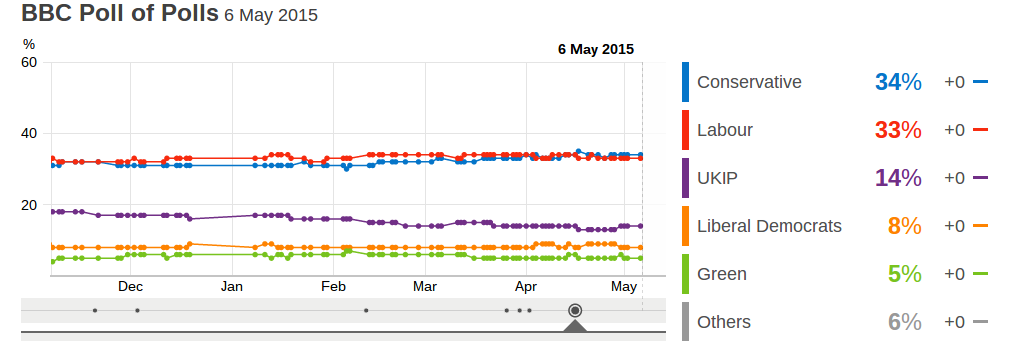
Source: BBC
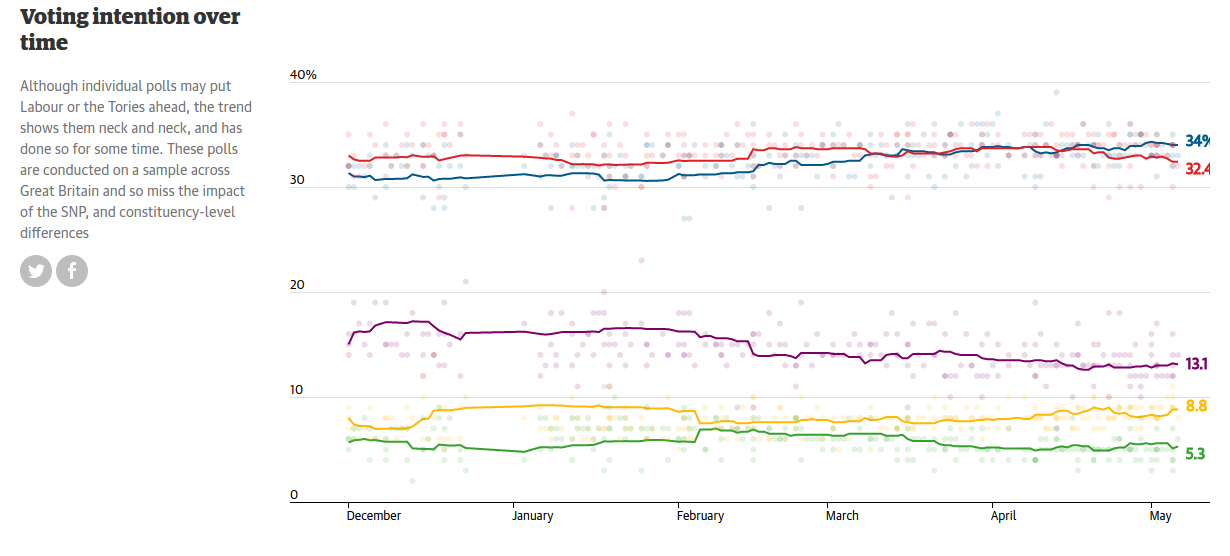
Source: Guardian
However, what matters is how many seats parties win, not how much share of the vote they win. All pollsters and bookies that I have come across agree that the Conservatives are likely to emerge as the largest party, ahead of Labour. Though there are some variances in the projected gap between the Conservatives and Labour. The lowest projection for the Conservatives is found on the Guardian site at 276, whereas YouGov, Election Forecast (www.
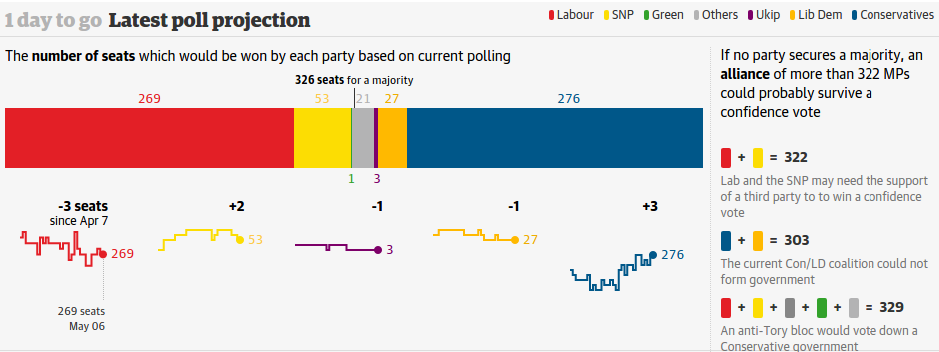
Source: Guardian
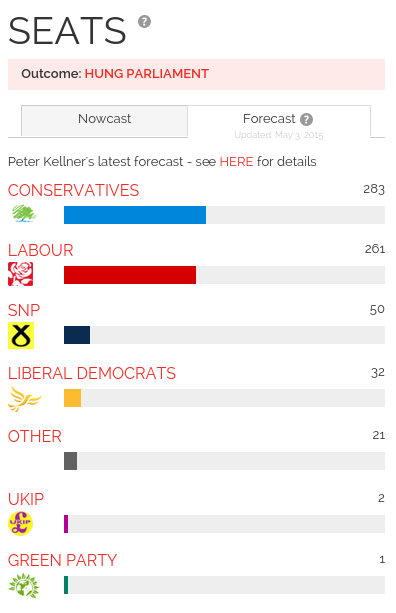
Source: YouGov
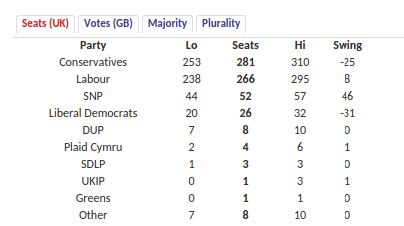
Source: 2015 UK Parliamentary Election Forecast
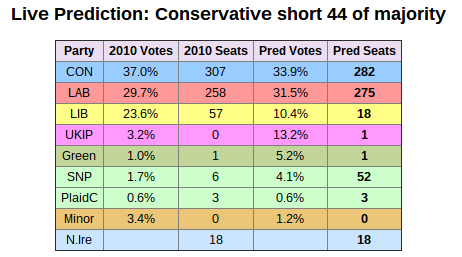
Source: Electoral Calculus
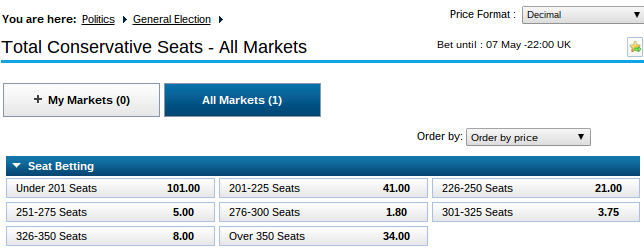
Source: William Hill
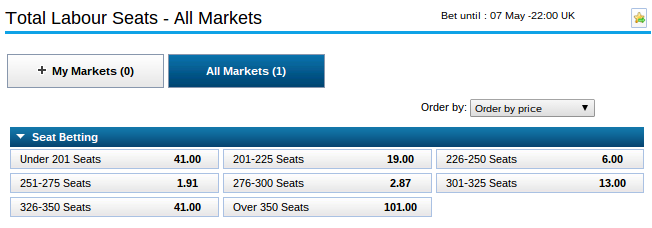
Source: William Hill
And it seems that in England, the Conservatives may be on course to win an absolute majority (267 or more), which may have constitutional repercussions.

Source: 2015 UK Parliamentary Election Forecast
As for the composition of the next government, a Labour minority government is favoured by the bookies ahead of the current coalition of the Conservatives and the Liberal Democrats.
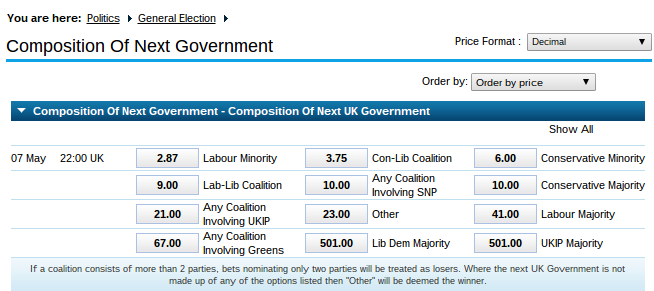
Source: William Hill

Source: Paddy Power
Are the pollsters and bookies broadly right? Which projection will be the closest to the actual result? We will find out soon.
